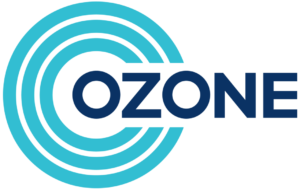By Denise Turner, Director of Research and Insight, Newsworks
Proving the link between advertising spend and return is, in theory, much easier than ever before, with the arrival of digital marketing opportunities seemingly offering an easy way to establish that link. But it’s not that simple.
The advent of digital marketing has brought many advances. It has, however, brought with it many backwards developments – not least the tendency to focus on intermediate measures as if they were end goals when in reality, they have no commercial value for brands. It has also led to an unhealthy focus on the last action driving sales, when we know there are multiple influences, both offline and online, along the consumer journey.
With established media the industry has decades of experience in applying rigorous structured tests, or market mix models, to tease apart the media and marketing factors that drive success and return to a business from advertising investment. Moreover, we know how to do this at the highest levels of statistical confidence. We have spent a long time determining the complexity of the interplays between media channels to deliver overall campaign effectiveness, as well as how those change at different levels of investment.
With the data generated from digital marketing, there are almost limitless, instantaneous reports available about the activity that is running, at a highly detailed, site by site and second by second level. However, the “outputs” of these reports aren’t business relevant, only “response optimisation” relevant.
And the domino effect continues: the volume of available data combined with marketers’ need for short-term indicators of advertising success has also led to a disturbing focus on a short-term sales response. Sales are relatively easy to achieve. Profitable sales that build brand value on the balance sheet are far harder to achieve – and far harder to measure.
Paradoxically, digital has turned back the measurement clock. The illusion of precision has even led to a belief that media channels that don’t or can’t supply a definitive “what happened next” number are somehow less effective. Digital advertising is treated as one amorphous mass with little or no effort made to separate it out into its component parts, particularly when it comes to display. Not all digital display is the same, even though it’s often thought of and bought as though it is. Programmatic bidding models strip out the context, leading to lower returns and potentially damaging issues around brand health.
While all media are digital these days and established media exist across platforms, we believe this lack of separation causes the biggest issue for news brands. Readership across news brands is growing, primarily on their digital platforms. So, if we can’t measure the impact of advertising in digital news brands as well as in print, then we are underestimating their true power.
In order to truly understand how different media deliver profit to the bottom line, research has to separate out the amorphous mass of digital, and deliver a comprehensive understanding of the myriad environments that digital display encompasses – from premium, engaged environments – such as news brands – to general free browsing.
For instance, we know that seeing an ad in a quality environment drives greater engagement, better brand response and is 42% more cost effective (Source: Value of Quality, GroupM).
It is clear that context, particularly in the digital environment where it’s easy to label everything as one entity, is a key factor in the success of advertising. We need to be accounting for the same nuances and differences online that we would do in the “real world”.
On that basis The Bottom Line study, conducted on Newsworks behalf by respected effectiveness expert Sally Dickerson, from Benchmarketing, part of Omnicom Media Group, addresses those challenges head on and proves that not all digital is equal.
For almost all established channels, increasing investment from low levels improves the profit return on investment (PROI – the contribution to the bottom line from advertising).
This is certainly the case for digital news brands with a 62% improvement in PROI. However, increasing spend in digital display results in diminishing returns, with a reduction of 23%.
This finding alone is yet more evidence of the growing importance of trusted, quality online environments.
And for advertisers that should matter a lot.
To find out how you could improve your bottom line check out our Profit Calculator.









